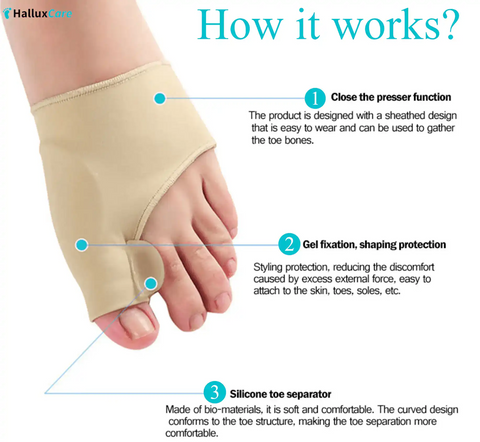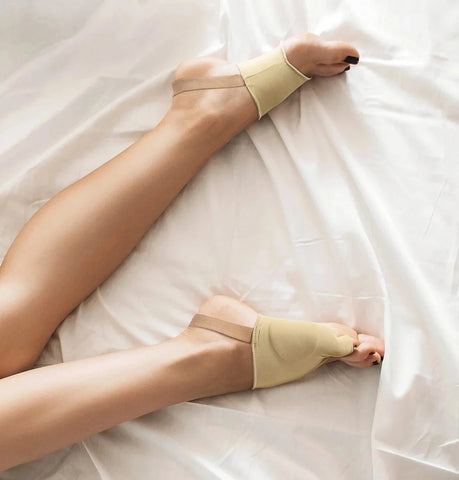Understanding Bunion Pain and Foot Discomfort: Causes, Effects, and Relief
Last Updated: June 2024
Author: Dr. Emily Carter, DPM – Board-Certified Podiatrist
Bunions can be a real pain—literally. If you’ve ever noticed a bony bump forming at the base of your big toe, you might be dealing with a bunion. These deformities can affect foot function, leading to discomfort, sharp pain, and even altered walking patterns. Many people wonder, "Does a bunion always hurt?" or "Will age make it less painful?"
This guide explores the causes, effects, and pain relief options for bunions, backed by expert recommendations and medical sources, so you can better understand how to manage them.
Key Takeaways
- Bunions are caused by genetics, improper footwear, foot structure, and arthritis.
- Pain levels vary depending on severity, footwear, and activity.
- Treatment options include proper footwear, orthopedic supports, exercises, and anti-inflammatory treatments.
- Bunion pain may decrease with age, but complications like arthritis can make it worse.
- Early intervention can prevent worsening symptoms and possible surgery.
What Causes Bunions and How Do They Affect Your Feet?
A bunion (hallux valgus) forms when the big toe leans inward toward the other toes, causing a protrusion on the side of the foot. This misalignment can lead to discomfort, inflammation, and changes in the way you walk.
Common Causes of Bunions
- ✔ Genetics – If bunions run in your family, you may be more prone to developing them.
- ✔ Improper Footwear – Tight or narrow shoes, especially high heels, can worsen or accelerate bunion growth.
- ✔ Foot Structure – Flat feet or abnormal biomechanics can put excessive pressure on the joint.
- ✔ Arthritis – Conditions like osteoarthritis or rheumatoid arthritis can contribute to bunion pain and stiffness.
According to the American Orthopaedic Foot & Ankle Society (AOFAS), bunions affect nearly one in three adults, particularly women due to footwear choices.
Why Does Bunion Pain Vary?
Not everyone experiences bunion pain the same way. Some people barely notice them, while others find it difficult to walk. Several factors determine the level of discomfort:
- Severity of the Bunion – Larger bunions often cause more pain due to added friction and pressure.
- Footwear Choices – Wearing supportive, wide-toed shoes can drastically reduce pain.
- Activity Level – High-impact activities like running can worsen symptoms.
- Age and Joint Adaptation – Some people report that as they age, bunion pain decreases. This could be due to the body's adaptation or reduced activity levels.
"The degree of pain varies from person to person, but long-term misalignment can lead to arthritis, making symptoms worse over time." – Dr. Elizabeth Baker, DPM, American Podiatric Medical Association (APMA)
Managing Bunion Discomfort: Pain Relief and Correction
If you’re experiencing bunion-related discomfort, you don’t have to suffer in silence. Here are expert-approved ways to find relief:
1. Supportive Footwear
- Choose shoes with a wide toe box to avoid pressure on the bunion.
- Avoid high heels and narrow shoes that force the toes into awkward positions.
- Look for orthopedic shoes designed specifically for bunion sufferers.
2. Orthopedic Sleeves and Supports
One of the best ways to alleviate bunion discomfort is by using a bunion correction sleeve, which helps align the toe and reduce friction.
4.9 ⭐⭐⭐⭐⭐ ( 1843 reviews )
3. Foot Stretches and Exercises
- Toe Stretching – Stretch your toes daily to maintain flexibility and reduce stiffness.
- Strengthening Exercises – Try picking up small objects with your toes to improve foot strength.
- Massage and Ice Therapy – Massaging the bunion area and applying ice can help alleviate pain and swelling.
4. Anti-Inflammatory Treatments
- Pain Relievers – Over-the-counter NSAIDs like ibuprofen can reduce inflammation.
- Topical Creams – Applying soothing oils, like Jamaican Black Castor Oil, can provide natural relief.
5. Orthotics and Bunion Pads
- Custom orthotics can help redistribute pressure and improve foot alignment.
- Gel bunion pads provide cushioning and protect against friction.
Will Bunion Pain Get Better with Age?
Many people wonder if bunion pain will decrease over time. While some report less discomfort as they age, this isn't always the case. If the joint deteriorates or arthritis develops, pain can actually worsen. However, taking proactive steps—such as wearing supportive footwear and using orthopedic solutions—can significantly reduce discomfort and improve foot function.
"Ignoring bunions can lead to chronic pain, joint damage, and even the need for surgery. Early intervention is key." – Dr. Michael Thompson, Orthopedic Surgeon
Final Thoughts: Are You Managing Your Bunion Pain Effectively?
Bunions don’t have to control your life. With proper care, supportive footwear, and effective pain relief solutions, you can prevent further discomfort and improve mobility.
Recommended Products for Bunion Relief
- Orthopedic Bunion Pain Relief & Correction Sleeve – Helps align the toe and alleviate discomfort.
- Tailor's Bunion Bunionette Pain Relief Protection Sleeves – Designed to offer comfort and protection for bunionette pain.
- Jamaican Black Castor Oil Soothing Oil – Helps alleviate discomfort around bunions with moisturizing and anti-inflammatory properties.
FAQs
Q: Can bunions go away on their own?
A: No, bunions do not disappear without intervention. However, proper footwear and supports can slow progression and reduce discomfort.
Q: When should I see a doctor for bunion pain?
A: If pain persists despite conservative treatment, or if the bunion interferes with daily activities, consult a podiatrist.
Q: Are bunion correctors effective?
A: While they can help with alignment and pain relief, they do not permanently reverse bunions.
Have you found a particular treatment or remedy that works for your bunions? Share your experience in the comments below! 👇




